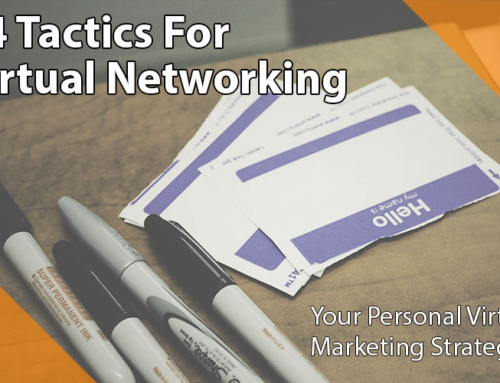When analytics and AI are being used everywhere, it’s easy to feel left behind. Especially if your company doesn’t have reams of customer data, or you lack the capacity to analyze it. But marketing insights that clarify your customers’ needs, buying journey, and overall experience with your company are crucial for creating marketing that drives revenue.
Fortunately, there’s a simple tool available to every organization, of every size, that provides the kind of marketing insights you can’t get from big data: direct interviews. If you’re not doing these interviews, you’re missing invaluable information. Direct insights provide a competitive edge that helps you outthink competitors, instead of simply outspending them.
Digital marketing expert David Bradley says stakeholder interviews are the single most powerful activity for strategically reviewing your company. In his new book, Digital Marketing MBA, David notes that the depth of insight gained from direct interviews cannot be matched by quantitative research or industry reports.
While digital data can provide significant value, it’s also a disconnected snapshot of your stakeholders’ experiences. Meanwhile, a live conversation can go in any direction, free of digital boundaries. While you can gather all kinds of information online via polls and surveys, there’s nothing on the qualitative side as deeply educational as talking to a human being. It’s a crucial non-digital piece of your digital strategy process.
Below are five steps to help you gather actionable marketing insights from stakeholder interviews. Read on to learn more about David’s interview techniques and how he turns insights into action.
Step 1: Define Your Objectives
Start with what you’re trying to accomplish and what kinds of information can help you do it. This could be related to your general business strategy or specific to an initiative you’re trying to launch. Ideally, you need an end goal to create a focus area for questions.
For example, you might be collecting data to better communicate with customers and improve their satisfaction scores. If so, your questions might be centered around their feelings, how they respond to certain prompts, or understanding the language they use. Or maybe you’re trying to improve your B2B customer service and empower more reps to drive sales. In that case, you might be looking for gaps in your current support system, info about how to streamline a process, or new ways to offer added value.
Step 2: Talk With Internal Stakeholders
Once you’ve identified an objective, talking with your in-house team will help you shape the questions you’ll ask customers. In a sense, you’re interviewing your employees to learn what they need to know about the market to better fulfill their roles. Where are the knowledge and experience gaps that impact how your team interacts with your customers? What are the weak areas that, if examined, could provide valuable marketing insights?
You don’t necessarily need to speak with every employee. David recommends identifying the roles that are most relevant to the topic you’re exploring. For instance, if you want to learn more about your target market, look to the people who interact with customers the most, such as customer service and sales. If you’re examining internal processes or technology that affect your marketing efforts, focus on roles like marketing and IT.
He also recommends having a variety of perspectives, especially if you’re looking for information about company operations that can shape the customer experience. Talk to employees who recently joined the company as well as those who have been with you for years. And don’t discount the input from HR or accounting—you may be interested to hear what they’ve observed regarding customer communications or service issues.
Lastly, it’s a good idea to share some of the findings or next steps with the employees you interview. This helps reassure people that their time was well spent and that they are valued.
"The more you learn, the more you can adjust your approach to figure out what else you need to know."
Step 3: Create an Interview Guide
David recommends creating a customer interview guide after speaking with internal stakeholders. Start by developing a hypothesis or two, based on your internal conversations, about the topic(s) you’re exploring. This will help you identify what you need to learn from customer interviews, and what particular areas are important to ask about. You can even crowd-source questions from your internal team.
But, be careful to not get locked into a train of thought. The point of the guide is to give you a starting point, not a rigid format. Even as you’re talking to internal stakeholders, let your hypothesis unfold and evolve as you learn new things from each conversation. The goal of every interview should be to educate yourself so that you’re a little bit more ready for the next conversation, or the next segment of stakeholders.
The more you learn, the more you can adjust your approach to figure out what else you need to know.
Step 4: Interview Customers Won and Lost
Your goal is to fully understand the buyer’s journey, starting from the moment a relevant need surfaced. This includes their search process, initial impressions, the point of purchase, product use, customer service, referrals, repeat buys, loyalty programs, etc. Look for insights on how they made decisions, what they thought and felt at each step.
If you have a way to contact lost customers, their input can be incredibly valuable. You can try a simple communication, such as, “Hey, we understand you went with someone else, and we wish we had won over your business. We truly hope you’re satisfied with what you got. We just have one or two questions to see if we can better serve customers like you in the future.”
If you can reach a lost customer, ask questions like: Take me back to the day you decided to make the purchase—what were you thinking? What was your day like? What led you to that point? You could also ask them about what you could have done better, what worked about your process and what didn’t. You may encounter things that are difficult to hear, but it can give you great insights about why someone took their business elsewhere.
Best Practices for Conducting Interviews
One pro tip, perhaps obvious but often overlooked, is to record your interviews and transcribe them later. That way, you can fully focus on the conversation. David also recommends starting out by explaining why you’re conducting interviews and how the interviewee will contribute to your efforts. Doing so upfront can help build trust and openness.
In addition, David offers these best practices:
-
- Foster open communication. Having a neutral, bias-free attitude is vital to making people comfortable enough to give you the honest truth about how they feel. Let them know your intention is to learn how to improve things for employees, customers, etc., and make sure they feel like they’re being heard. Provide assurance that the conversation will be kept confidential. And, in general, one-on-one conversations are usually best.
- Prepare your questions carefully. To make sure you hit upon the areas where you most need input, group your questions into buckets and aim to touch on all of them. When it comes to the questions themselves, be very careful with your wording. How you phrase something is going to dictate, to some degree, what someone says in response. So keep your questions as neutral and open-ended as possible.
- Stay flexible and fluid. Facilitating a good conversation isn’t about following a template to a T. It’s about using your intuition to take that conversation where it needs to go. Sometimes there are questions where you’ll think, okay, I don’t need to ask this anymore; things are clear enough. There will be other areas that are important to dig further into, to fill gaps in your understanding.
Keep in mind that you’re there to learn, and listen. Listen, listen, listen.
Step 5: Motivate Your Team to Take Action
So, you’ve done all your interviews. You have reams of data that’s been transcribed and now sits in digital files. Yet this where many efforts come to a screeching halt. It’s not easy to move from the excitement of gathering data to the hard work of diving in and implementing it. What’s the best next step to ensure that your company puts your marketing insights to use?
As David explains, it’s a combination of how you communicate the project’s value and how well you manage it through to completion. Anytime you’re asking people to invest significant time in an initiative, there are going to be some that you have to sell it to. But aligning your organization around understanding why this process is urgent and important is part of what makes these interviews such a powerful activity.
Here are few ways to drive action:
- Create an early win. Assign a team to produce something, early on, to communicate some of the findings and demonstrate how you can implement them. You could start by creating a buyer persona or a new value proposition document, and explaining how it will be put to use (to improve your market positioning, create messaging that converts, etc.). Find ways to apply these tools immediately to existing activities, instead of waiting until you finish the entire strategy process.
- Designate a steering committee. This group can prioritize projects based on what you discover in the interviews and create a schedule for completing them. They can also communicate ongoing efforts to keep employees motivated and in the loop. It’s important to demonstrate that something came out of all the effort, and here’s how you’re going to use it.
- Explain the value to everyone. It’s easy for many employees to overlook the value of this kind of research because they may not see how it applies to their day-to-day role. Lots of people can go back to work and forget that the new information is meant to serve them, that it wasn’t just busy work. So, share the findings and clearly explain how it affects different roles, directly or indirectly. One of the best ways to genuinely thank people for their participation is by showing them that you’re actually putting all that time invested to good use.
Keep Your Finger on the Pulse
Information is a competitive advantage at every level in your organization. So make it a regular practice to do customer interviews and gain marketing insights, even if it’s just a few per month. Designate a time, every month or every quarter, where interviews are conducted, logged, and mined for new information to compare with your existing findings. Because it’s crucial to keep your finger on the pulse and stay connected with your audience.
It’s too easy for businesses to become disconnected from their customers. Even if you’re a marketer, you can get stuck in marketing mode and lose your understanding of the audience that you’re trying to serve. That’s because looking at an entire market of people is less intimate than connecting directly with individuals. And that’s why bringing people out from behind the digital firewall, to come face-to-face (or voice-to-voice) with a person, is so incredibly valuable.
Need help turning customer insights into marketing strategy and content? That’s what we do here at RESON8. Contact us to schedule a free consultation.
Photo credit: Photo by Johanna Buguet on Unsplash







Leave A Comment